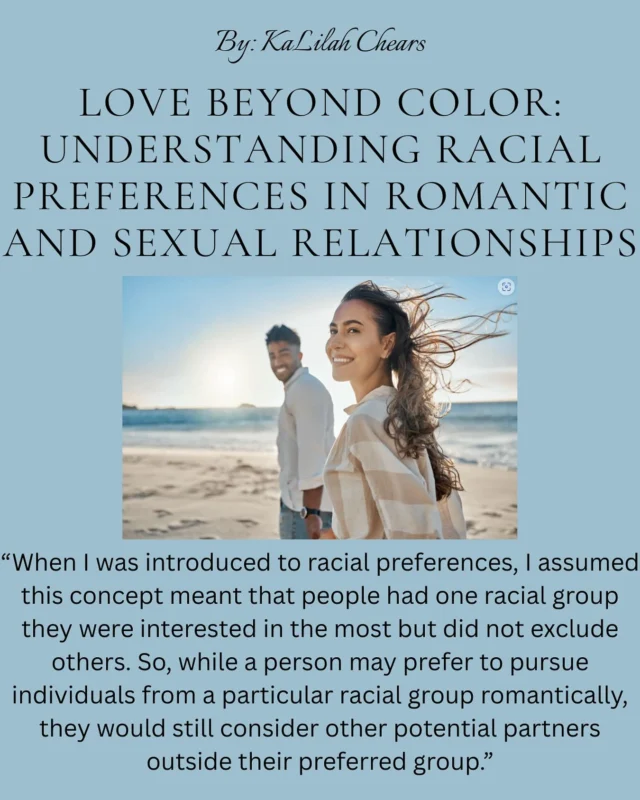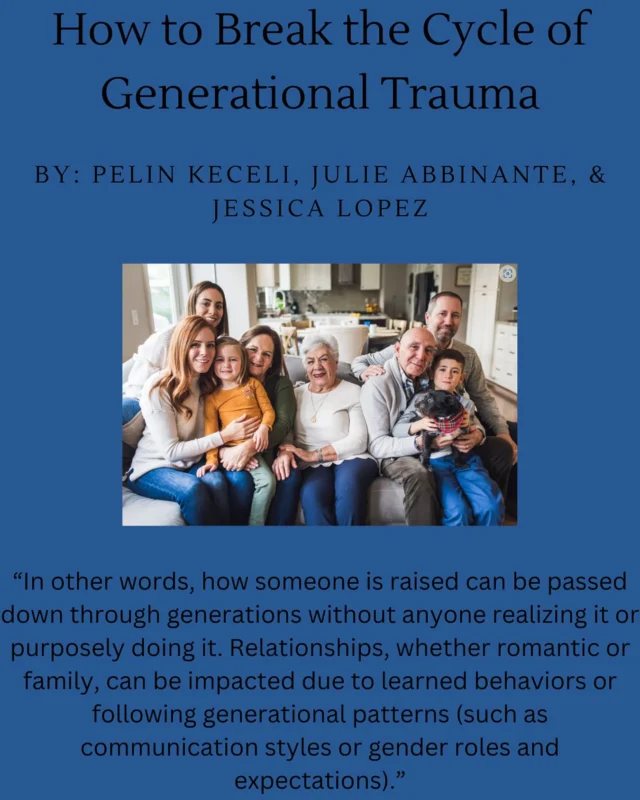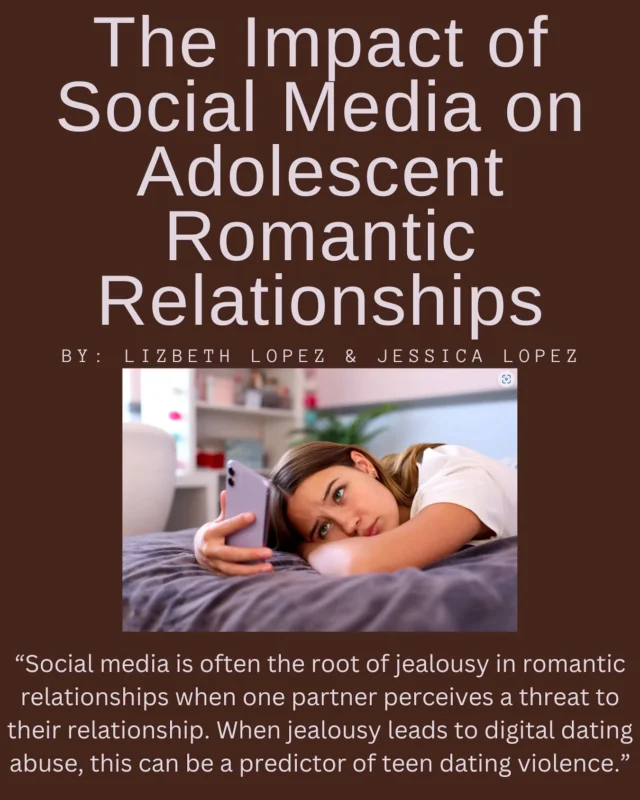My family has been directly impacted by substance abuse since before I was born, and it has continued to be a presence in my life today. My parents met in 1988 and my father was in recovery from alcoholism. Over the course of their relationship, my father experienced a cycle of relapse and recovery which directly affected his relationship with my mom. During the time when my parents got married and my two brothers and I were born, my dad was going to AA meetings and beginning to find his peace in recovery. It was during this time that he also discovered his love for bike riding. In the early 2000’s when my brothers and I were young, he unfortunately experienced another relapse. This began his first journey into professional treatment for his disease. This first program lasted 30 days and it followed the 12 Steps outlined through Alcoholics Anonymous. When my dad returned home after this program, he was again motivated by these steps to continue through sobriety. About two years later, in 2008, my father returned to treatment after another relapse. At this point, my brothers and I were around eight, ten, and twelve and started to become aware of the situation around us.
My father attended a treatment facility in Abilene, Texas (we named our family dog Abilene in honor). This program offered “family weeks” where children and other family members were able to stay with their loved one, attend meetings with them, and receive treatment if needed. My family and I ended up staying there for six weeks. This program created the biggest shift in my father and his addiction. In the years following, he was passionate about his hobbies and spending time with me and my brothers. He received promotions at work and was excited about it. He continued to attend AA meetings and follow the steps, and demonstrated to us that some things in life are difficult but you “have to do the work,” and “keep coming back,” and “one day at a time,” as my mom always says.
My father unfortunately passed away in 2012. It’s a sorrowful ending to a story that showed so much promise and hope. My dad’s journey through addiction and recovery may not have been linear, but it was realistic. Addiction is messy, and painful, and it can break people and the people around them. Looking back, it’s easy to notice all the times he fell down, but I think it’s important to recognize all the times he got back up, and kept going back. My family’s experience with addiction has demonstrated to me the possibility for resiliency through what feels like impossibility. Following the death of my father, my mom experienced her own battle with alcoholism. Since then, she’s now been sober for seven years. My mom is a daily reminder to me that you can go through difficult experience after difficult experience and still work every day to strive for serenity and peace through it all, and for our family.
What my family and I have gone through has also directly motivated me in my education and future career path. I’m working towards a bachelor’s degree in human development and family sciences from NIU where my dad actually received a master’s degree in education and special education. He used this to become a special education teacher and later an administrator of a high school. My mom is also a social worker and a Certified Alcohol and Drug Counselor so I’m following in their footsteps. This line of work runs in the family. I’m personally motivated to work with children and families impacted by death, addiction, or other adverse experiences. I know what it’s like to be a child in a family that is experiencing hardship, and I now want to be able to provide support and education in hopes of preventing negative outcomes.
Substance Abuse in the United States
Our country has experienced a substantial rise of substance abuse cases, and especially in drug overdose death rates (NIDA, 2023). Many can be attributed to the prevalence of opioids and prescription drugs, the increased need for mental health resources, and the stress resulting from the COVID-19 pandemic. According to a research report from the National Institute on Drug Use: “Marijuana and hallucinogen use reported by young adults 19 to 30 years old increased significantly in 2021 compared to five and 10 years ago, reaching historic highs in this age group since 1988” (NIDA, 2022). Regarding alcohol use, there has been an increase in both binge (5 or more drinks in a row in the past two weeks), and high-intensity drinking (having 10 or more drinks in a row in the past two weeks). These have been steadily increasing over the past decade and in 2021 they reached the highest level ever recorded since first measured in 2005 (NIDA, 2022).
More people have begun to turn to substances as a way to cope with negative emotions and adverse situations. As this coping mechanism is established, they are less likely to turn to their personal relationships as a positive outlet for stress and support. In most cases, substance use and abuse does not solely affect the person using them. Family, friends, coworkers, and society as a whole experience the consequences related to substance abuse and addiction. Substance abuse can impact anyone the addict or user are close to, and especially those whom they are involved in a romantic relationship with. It can create a wedge between partners, as this behavior often leads to patterns of secrecy, emotional disengagement, and withdrawal (e.g., Reiter, 2019).
Substance abuse can be described as a pattern of compulsive substance use resulting in interpersonal adverse consequences, such as legal problems and marital difficulties (Substance use, abuse, and addiction, 2008). While experiencing addiction, an individual’s attention is focused on the specific substance as it is their outlet for stress relief and feelings of happiness. As this often occurs alongside a romantic partner, this can create difficulties among multiple dimensions within the relationship. As one partner falls deeper into isolation with their substance abuse, the other is left emotionally detached, distanced, and ignored. Substance abuse can have many negative effects on families and relationships. Addiction can lead to health problems, increased mental health issues, and, unfortunately, in some cases, death. The focus of this post will be how substance abuse can cause strain within the dimensions of romantic and family relationships, and how rebuilding personal connections and relationships aid in the recovery from addiction.
Couple Relationships
Romantic relationships build upon three components that form together to create a triangle of consummate or complete love, according to Dr. Robert J. Sternberg. The three components include commitment, passion, and intimacy. Intimacy refers to feelings of closeness, connectedness, and the experience of warmth in a loving relationship (Robert J. Sternberg, n.d.). These feelings are built over time and result from trust and self-disclosure. As one partner suffers from addiction, they begin to isolate themselves from the other partner and stray away from emotional engagement. Couples who struggle with substance abuse frequently report emotional disengagement, living parallel lives, and experiencing a relationship absent of affection. The intimacy among those experiencing addiction is with the substance, and it acts as a substitute for real-life experiences in their relationship (Morrissette, 2010). This is similar to addictions involving pornography, gambling, and sex. An individual is seeking something outside of their relationship to manage their emotions and withdrawal from their reality.
As one partner begins to isolate and emotionally disengage, the relationship suffers overall. This certainly applies to substance abuse in couple relationships. The partner experiencing substance abuse is no longer emotionally present, and the feelings built from trust and self-disclosure are unsupported. The other partner may begin to isolate as well because they feel ignored and alone in the relationship. In this way, they may no longer want to try to engage as they feel their partner has put distance between them. As intimacy begins to falter, the other components may experience damage as well. Partners may stray away from romantic and passionate phenomena in their relationship if they don’t feel emotionally connected. Issues with intimacy can also lead to uncertainty about commitment if the partner experiencing substance abuse is not communicating their emotions and how they feel in the relationship.
Patterns of withdrawal and emotional disengagement can also affect a person’s attachment in relationships. Those who seek treatment for substance abuse have been found to be more emotionally reactive, have heightened levels of anxiety, and possess higher levels of fear of intimacy. This corresponds to attachment theory in relation to addiction. Individuals experiencing addiction perceive their substance of use as a secure base and are then able to withdraw from close relationships and intimacy (Morrissette, 2010). The development of trust, closeness, and vulnerability within a romantic relationship is attached to the substance as the addiction warps a person’s perception of their close personal interactions.
Romantic relationships impacted by substance abuse can have difficulty sustaining the three components stated above and a secure attachment. According to Dr. Sternberg, commitment, passion, and intimacy are fueled by trust, feelings of closeness, and the reassurance that your partner will always be by your side. Substance abuse can manipulate a person’s perception of trust and security within their relationship. They no longer view their partner as the relationship that gives them the most fulfillment. Addiction convinces them that the substance is what will always be there for them.
Family Relationships
Family units can also be greatly affected by substance abuse. Alongside the direct harms which addiction brings, like mental health and health concerns, family members of someone experiencing a substance use disorder are at greater risk for adverse experiences. According to a study on the lifespan risks of growing up in a family experiencing mental illness or substance abuse, the risk of child maltreatment was five to seven times higher if substance abuse of a family member was reported. Factors which were significantly mediated by child maltreatment in homes affected by substance abuse include risk of health problems including obesity, lower income, low educational achievement, and decreased life satisfaction (Clemens et al, 2020). These components can impact the wellbeing of other family members and harm the growth and development of children.
Child maltreatment includes child neglect, physical abuse, sexual abuse, and emotional abuse. Someone experiencing substance abuse within a family may be less in tune to the relationships around them, like with their partner or children, as they are more likely to emotionally isolate themselves. If a child is in a home with someone who is intoxicated, their decision making is impaired, and they may be more likely to be neglectful regarding the safety and wellbeing of those around them. This can also lead to any of the types of child maltreatment as substance abuse affects decision making processes and can alter the perception of one’s reality, and their close relationships. This can lead to difficulties for the entire family when the individual experiencing addiction is experiencing distress and then uses substances to regulate, thus creating a cycle.
My family’s experience with addiction has demonstrated to me the possibility for resiliency through what feels like impossibility. Following the death of my father, my mom experienced her own battle with alcoholism. Since then, she’s now been sober for seven years. My mom is a daily reminder to me that you can go through difficult experience after difficult experience and still work every day to strive for serenity and peace through it all, and for our family.
For parents who are experiencing substance abuse, this can have significant effects on children. In families with parental substance abuse, children may experience exposure to social isolation, financial struggles, exposure to traumatic life events, and mental health difficulties (Coffman & Swank, 2021). As one parent has begun to isolate themselves, they are modeling this behavior for their child who may start to replicate it. The other parent, if present, is also experiencing the effects of the substance abuse in their relationship which the child is observing. Families experiencing substance abuse have a higher rate of inter-parental conflict, which has adverse effects on children living in the home If a child is witnessing conflict, but their parents are emotionally disengaging and can’t offer support, they may start to internalize the effects and start to show symptoms. These symptoms may include codependency and insecure attachment, which have characteristics of poor emotional regulation and lack of expression of feelings.
Substance abuse in the family significantly affects attachment systems (Coffman & Swank, 2021). Children and their caregivers begin to develop a bond, or attachment, in early childhood which extends into adulthood. The nature of this bond predicts how a person behaves in other relationships in their life and how they perceive love and affection. Substance abuse can disrupt early attachment as a parent experiencing substance abuse may emotionally disengage and isolate from their family. This is harmful to a child’s attachment because they are looking for the security that their caregiver will consistently be there for them and validate their emotions and experiences. As a parent experiences addiction, their focus may be elsewhere, and their priorities have been shifted to include the substance use which may leave less room for the family unit. Although substance abuse can have negative effects on families and especially children, families can be resilient. Children have the ability overcome adverse experiences with a supportive system around them and trusted adults to guide them.
Intimate Partner Violence
Substance use is often associated with more frequent actions of risky and dangerous behavior. Alcohol, cocaine, heroin, etc., can inhibit decision-making and increase the likelihood of a threatening situation occurring. As discussed above, substance abuse can also lead to withdrawal and emotional disengagement in relationships, and couples with substance use disorders were found to be less warm and more hostile than couples with no psychopathology. Substance use in relationships was also associated with high levels of interpersonal hostility and low levels of interpersonal warmth (Florsheim & Moore, 2008). As a relationship experiences the stress of addiction, hostility, and low levels of warmth, it is more likely that they will also report lower levels of satisfaction.
These components above have been shown to predict intimate partner violence. The Center for Disease Control and Prevention defines intimate partner violence (IPV) as any behavior within an intimate relationship that causes verbal, physical, sexual, emotional, or psychological harm (Center for Disease Control and Prevention [CDC], 2015). IPV is strongly associated with relationships experiencing substance abuse. Levels of hostility, marital satisfaction, and heavy alcohol drinking significantly predicted the commission of IPV, even after controlling for demographic factors (Stalans & Ritchie, 2007). Addiction can cause a person to neglect their personal well-being, the people they love, and the things they care about. Although substance abuse does not cause domestic violence, left untreated, it may impair the perpetrator’s ability to understand and fully participate in domestic violence treatment. Substance-abusing IPV perpetrators also have high rates of refusal to attend domestic violence treatment, with over 60% refusal rate (Stalans & Ritchie, 2007). A partner experiencing substance abuse may not see the problem with their behavior which can further continue the pattern of consumption and perpetration. The high levels of hostility and low levels of warmth and satisfaction within substance-abusing relationships make it more difficult to navigate adverse situations between partners. It is often when faced with adversity that an individual experiencing addiction turns to substances to cope and further isolates themselves from their partner.
Lack of communication, heightened levels of hostility, lowered levels of warmth, and increased substance use is a perfect storm for intimate partner violence in any form. A partner may experience more difficulty communicating an issue with the other when they haven’t felt that there is a welcoming environment to do so. This could lead to a higher level of conflict, incidents of IPV, or problems could go ignored. This can then result in partners continuing to emotionally disengage and isolate. Addiction has a way of taking precedence in a person’s mind and causes them to act in ways that favor the continuation of the substance use and not their partner.
Social Support and Resources
Substance abuse can cause harm within different dimensions of relationships. One of the ways to combat addiction, however, is to strengthen these personal relationships to reduce the connection to the substance. According to psychiatrist Dr. Robert Waldinger, the director of a 75-year-old study on adult development, they have discovered that after studying two groups of men over their lifetime and analyzing their lives and relationships, the data showed that positive relationships keep us happier and healthier (Waldinger, 2015). Supportive connections protect our minds and bodies and prevent feelings of loneliness and experiencing negative effects that may arise.
As someone experiences addiction, they withdraw themselves from intimacy and emotional engagement within their personal relationships. This is harmful to their social connections and limits the amount of support they receive from others. Individuals with a substance use disorder have been found to have fewer social support network resources compared to those without (Pettersen et al., 2019). A pattern of isolation while experiencing addiction can further the cycle of substance use. Having social networks that encourage problematic behavior can certainly be a negative influence. On the other hand, supportive relationships with caring family members, partners, and friends—individuals who do not use substances themselves—have proven to be helpful in abstaining and maintaining sobriety (Pettersen et al., 2019). Rebuilding and maintaining positive relationships can bring strength and support back into the life of someone aiming to achieve sobriety. The antidote to substance use disorders is not only sobriety, but also positive and caring connections with others. Strengthening bonds with the social world can weaken bonds with substance use.
For an individual to begin the battle with substance abuse, they will need a strong support system. Family members and personal relationships are important to keep them grounded and remind them why they chose sobriety. Support groups such as Alcoholics Anonymous (AA) and Narcotics Anonymous (NA) are also great resources for those experiencing addiction. AA builds upon a foundation of twelve steps and twelve traditions to help people through the process of sobriety (Twelve Steps and Twelve Traditions Book, 2023). Those in the program will also likely engage in a supportive relationship known as sponsorship. Someone who has been a member of AA or NA for a longer period of time will “sponsor” someone new to the program. This relationship is one that provides strength and hope through positive and frequent communication, as well as guidance through difficult times. There are also resources available if you are concerned about someone you love and care about. Family members and others worried about someone with a drinking problem can receive support from Al-Anon and Alateen support groups.
Substance abuse can create patterns of isolation and withdrawal within personal relationships. It is possible for couples who are experiencing addiction in their relationship to lose their sense of trust and security they had built between them (Coffman & Swank, 2021). As one partner continues to turn to substances to cope with issues within their relationship, they both experience dissatisfaction and hostility. A combination of these factors has shown to lead to incidents of intimate partner violence among those abusing substances. Families also experience consequences from substance abuse as they are at a higher risk for adverse experiences, such as child maltreatment. Supportive social networks have shown to aid in stabilizing these situations by providing an outlet for those experiencing addiction to communicate without feelings of shame or guilt.
It is possible to rebuild relationships that have been affected by substance abuse. Partners and families can show resilience and determination to stay together through difficult times. Working together and believing in your partner that they have the strength to overcome addiction and maintain sobriety is key. It’s important to remember that you’re not alone, and there are people around you who can provide you with support if you’re struggling. The strongest way to reverse the effects of substance abuse on relationships is to rebuild close connections to weaken the ones with the addiction.
**If you or someone you know are struggling with substance abuse issues SAMHSA’s National Helpline is a free, confidential, 24/7, 365-day-a-year treatment referral and information service (in English and Spanish) for individuals and families facing mental and/or substance use disorders. 1-800-662-4357 or visit the FindTreatment.gov
References
- Center for Disease Control and Prevention (CDC). (2015, May 28). Intimate partner violence. Retrieved from http://www.cdc.gov/violenceprevention/intimatepartnerviolence/
- Coffman, E. & Swank, J. (2021). Attachment styles and the family systems of individuals affected by substance abuse. The Family Journal: Counseling and Therapy for Couples and Families, 29(1), 102-108. https://doi.org/10.1177/1066480720934487
- Clemens, V., Berthold, O., Witt, A., Sachser, C., Brähler, E., Plener, P., L., Straub, B., & Fegert, J., M. (2020). Lifespan risks of growing up in a family with mental illness or substance abuse. Scientific Reports, 10. https://doi.org/10.1038/s41598-020-72064-w
- Florsheim, P. & Moore, D. (2008). Observing differences between healthy and unhealthy adolescent romantic relationships: Substance abuse and interpersonal process. Journal of Adolescence, 31, 795-814. https://doi.org/10.1016/j.adolescence.2007.09.005
- Morrissette, P. (2010). Couples at the crossroads: Substance abuse and intimate relationship deliberation. Family Journal, 18(2), 146-153. https://doi.org/10.1177/1066480710364476
- NIDA. (2022, August 22). Marijuana and hallucinogen use among young adults reached all time-high in 2021. Retrieved from https://nida.nih.gov/news-events/news-releases/2022/08/marijuana-and-hallucinogen-use-among-young-adults-reached-all-time-high-in-2021
- Pettersen, H., Landheim, A., Skeie, I., Biong, S., Brodahl, M., Oute, J., & Davidson, L. (2019). How social relationships influence substance use disorder recovery: A collaborative narrative study. https://www.ncbi.nlm.nih.gov/pmc/articles/PMC6410387/
- Reiter, M. D. (2019). Substance Abuse and the Family: Assessment and Treatment. (2nd ed.) New York, NY: Routledge.
- Robert J. Sternberg. (n.d.). Retrieved December 19, 2022, from http://www.robertjsternberg.com/love
- Stalans, L. & Ritchie, J. (2007). Relationship of substance use/abuse with psychological and physical intimate partner violence: Variations across living situations. Journal of Family Violence, 23, 9-24. https://doi.org/10.1007/s10896-007-9125-8
- Substance use, abuse, and addiction. (2008). Retrieved December 19, 2022, from https://www.apa.org/topics/substance-use-abuse-addiction
- Twelve Steps and Twelve Traditions Book. (2023). Retrieved January 27, 2023, from https://www.aa.org/twelve-steps-twelve-traditions
- Waldinger, R. (2015) What makes a good life? Lessons from the longest study on happiness. [Video]. TED Conferences. https://www.ted.com/talks/robert_waldinger_what_makes_a_good_life_lessons_from_the_longest_study_on_happiness?language=en













